On this page we have a closer look at the life cycle of Marchantia, a liverwort (Familie: Marchantiaceae, phylum: Hepatophyta; sometimes Marchantia is called umbrella liverwort). Like other mosses, Marchantia shows an alternation of generation (more hereabout in
mosses). Moreover, Marchantia follows sometimes a vegetative reproductive path by means of gemmae.
The alternation of generation in Marchantia follows the next path (beginning from the haploid spore):
A compact, filamentous protonema with short rhizoids is formed from the haploid spore. A new thallus develops from this protonema by means of mitotic divisions. The male and female gametangia, called respectively antheridia and archegonia, are formed on this young thallus. In each antheridium numerous male gametes (antherozoids = sperms) are produced, but in each archegonium only one large single egg cell is produced (ovum). The sperm cells which are foreseen of flagella can reach the female gametophyte by means of a drop of (rain)water. Through capillary action the water can penetrate into the archegonium and the sperm cells can reach the immobile egg cell and fertilize it (oogamy). The zygote remains in this enclosure and does not pass a rest stage, but it develops inside the archegonium into a sporophyte. The diploid sporophyte grows thus on the gametophyte. Inside the sporangium meiotic divisions occur. The product of these divisions in Marchantia are (haploid) spores. Some diploid cells in the sporangium expand and form elateres (tubular cells with spiral-like thickenings) that contribute to the dissemination of the spores.
| Life cycle of Marchantia |
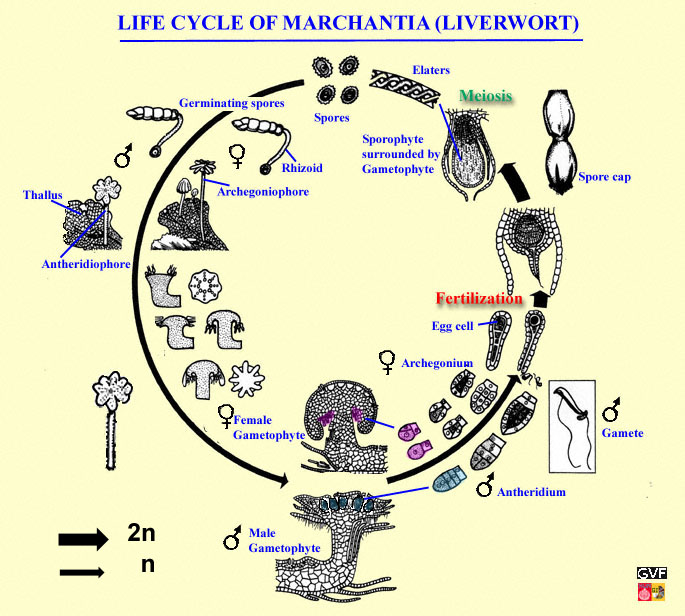
|
Thalli, gametophytes and gemmae
The haploid thalli (single thallus) are dioecious: they produce either (female) archegoniophores or male antheridiophores. Moreover, in Marchantia asexual reproduction occurs by means of fragmentation of the thallus or via gemmae produced from cells of gemma cups. Once these small bodies reach the soil through drops of rain, they can develop into a complete new moss.
| Thalli, female gametophyte (archegoniophore) and gemmae |
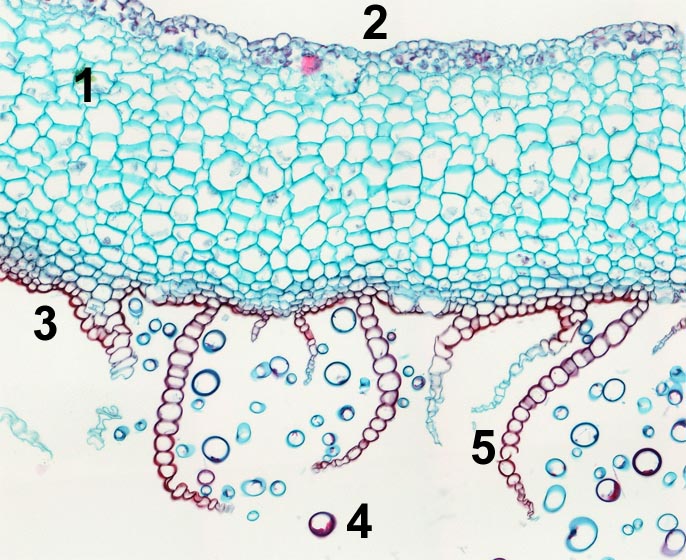
| 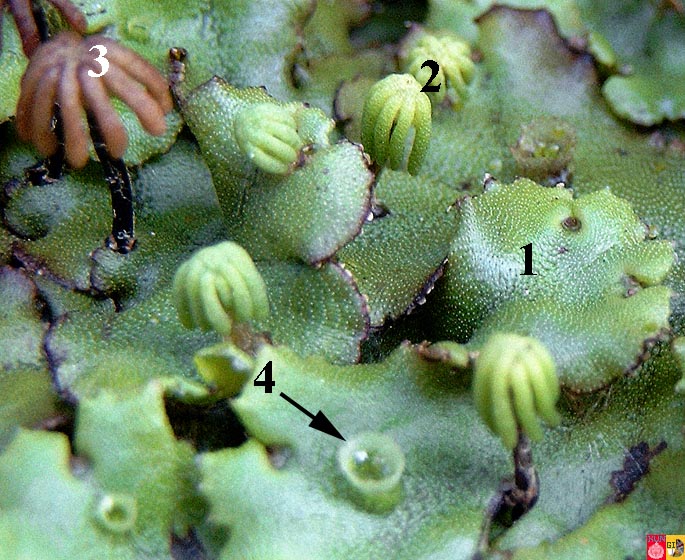 |
| 1 thallus; 2 scales; 3 upper cell layer; 4 rhizoids; 5 hair |
1 thallus ; 2 young archegoniophore; 3 mature archegoniophore; 4 gemma cups; photos Ted van Gaalen. |
Archegoniophores and egg cell, antheridiophores and sperms
On the thallus female gametophytes (archegoniophores) or male gametophytes (antheridiophoes) are formed.
female side: the archegonia are located at the lower side of the archegoniophore bevinden zich de archegonia. Each archegonium produces a single egg cell.
Male side: On the antheridiophore antheridiae canbe found which produce spermiae. Spermatogene cells divide mitotically and form sperm cells with flagellae. They depend on the presence of water to reach the egg cell.
| Archegoniophore (♀ female gametophyte) |
| Archegoniophore |
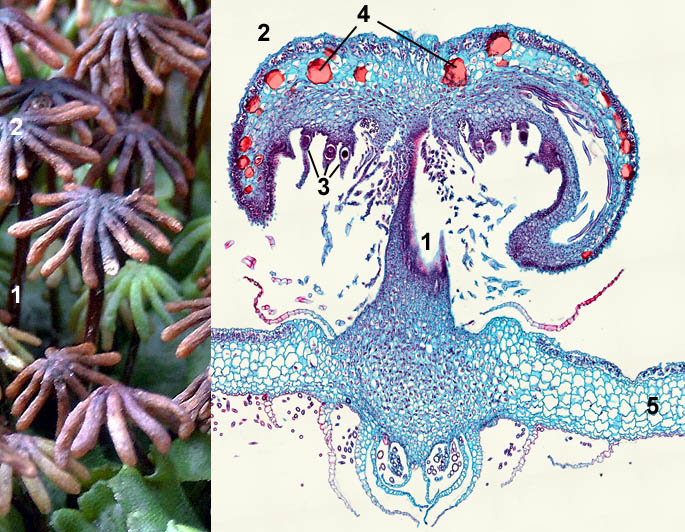
|
| 1 stalk; 2 cap; 3 archegonia; 4 slime cells; 5 thallus
|
| Archegonia |
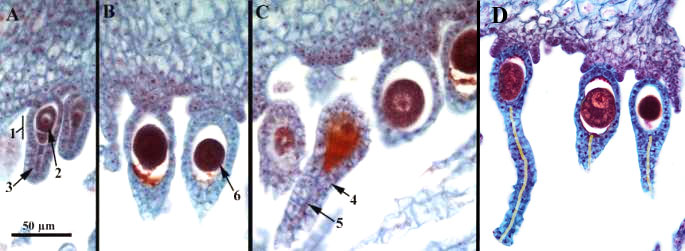 |
| 1 young archegonium; 2 egg cell; 3 neck canal cells; 4 mature archegonium; 5 neck canal; 6 mature egg cell; D overlay |
| Antheridiophore (♂ male gametophyte) |
 |
| Light microscopical views of the antheridiophore |
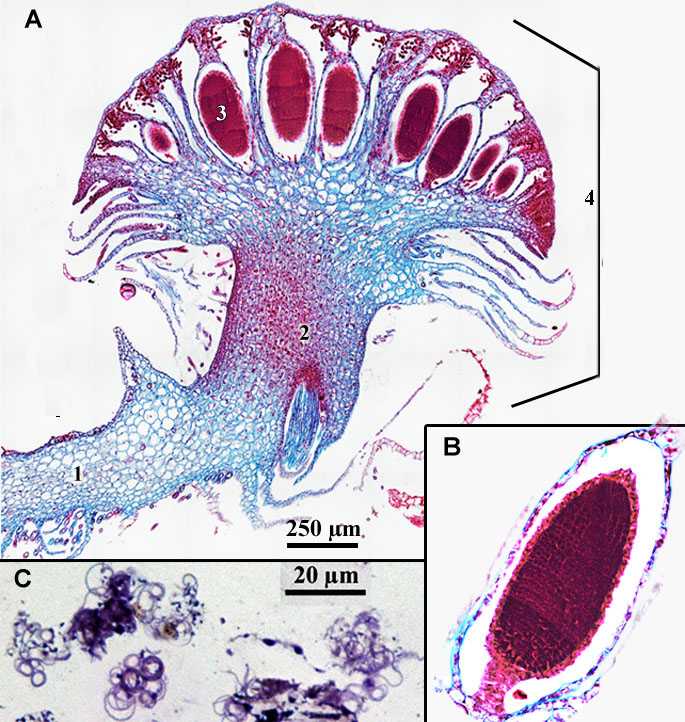 |
| A. longitudinal section: 1 thallus; 2 base of the antheridiophore; 3 antheridia; 4 antheridiophore; B: antheridium with spermatogenic cells; C sperms with flagella |
Sporangium
After fertilization the sporangium is formed from the zygote. This diploid sporophyte is entirely dependent of the haploid gametophyte that surrounds it. After meiosis, haploid spores are formed inside the sporangium. When the cap of the sporangium opens these haploid spores are spread and they can grow into a new gametophyte. The elateres are formed by expansion of diploid sporangium cells.
| Sporangium surrounded by archegoniophore |
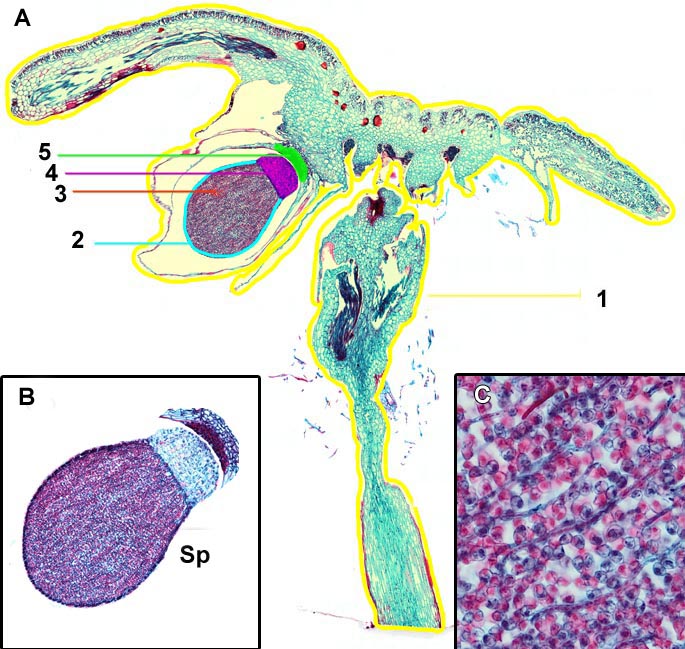 |
| A. Longitudinal section: 1 stalk of the archegoniofoor; 2 sporangium (spore capsule); 3 spores; 4 seta; 5 base; B detail sporangium; C detail spores and elateres in the spore capsule |







